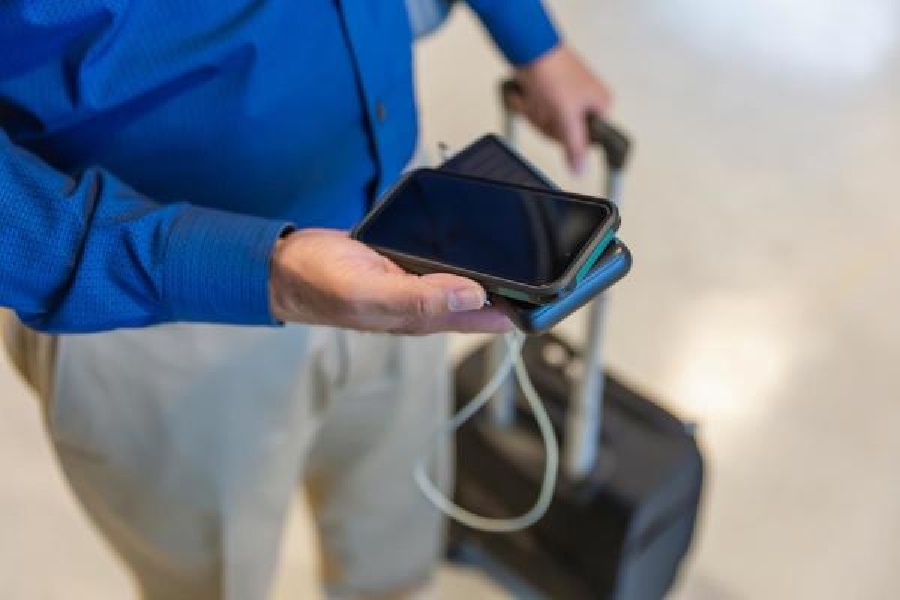 |
| Although tagging devices might hamper children’s development of a sense of independence, some parents find them to be a boon |
If your child could wear an implant — a microchip that could tell a computer where he or she was at any time to within a few metres — would you buy it? After the horrific snatch of three-year-old Madeleine McCann from her bed in Portugal earlier this month, the answer from many parents seems to be “yes”.
Prof. Kevin Warwick, who developed the technology that made it possible for the first child in Britain to volunteer to be “chipped” in 2002 — after the murders of Holly Wells and Jessica Chapman — has been bombarded with e-mails over the past few days from parents desperate to keep tabs on their children.
The chip technology works, in theory, by sending a signal via a mobile phone network to a computer that can identify the child’s location on an electronic map.
But there was the concern at the time over the ethics of tagging our children’s bodies — some child rights groups as well as sections of the media said it was a neurotic overreaction that would not benefit children in the long run. So Warwick, professor of Cybernetics at Reading University, UK, did not continue to develop the project nationally. “It caused such a backlash that we had to step back,” he says. But he adds that the point about chipping is not that you would use it to track your children 24 hours a day — only in a worst-case scenario. “You would hope that it never gets used,” he says.
There are, however, many other child-tracking devices on the market. They range from pay-as-you-go tracking services that follow the SIM card in your child’s mobile phone to electronic wristbands and specially tagged pyjamas. Some companies have shied away from such gadgets, fearing legal actions from parents should they fail for any reason, but others believe that the gadgets are destined to become part of normal parenting.
A Lancashire company, Connect Software, recently launched Toddler Tag, a child-safety monitoring system in which a tag smaller than a domino, which can take the form of a badge or bracelet or may be sewn into clothing, is allocated to each child.
The active Radio Frequency Identification tags work in conjunction with a reader to monitor child movement, raising the alarm when the child moves beyond a certain range. A typical package costs between £500 and £1,000. Chris Reid, the company’s commercial director, says that several readers could be used by a parent to create a “virtual ringfence” that triggers an alarm if the child goes beyond the boundary or towards potential hotspots, such as kitchens or stairways. The company has also designed toddler “Smartwear” — bibs, T-shirts, dungarees, hats and jackets — which comes ready-tagged and, says Reid, may be useful not only to nurseries but to give parents an “electronic pair of eyes” when taking children to theme parks or on holiday.
Globalpoint Technologies, based in Newcastle, offers a “personal companion” that uses a combination of mobile phone and GPS technology to enable you to track your child by computer to within a few metres (cost: £400-£500). It picks up locator signals from satellites and sends them as a text message or via the mobile telephone network to a website, and is based on technology developed by the British ministry of defence.
Ian Rycroft, a company spokesman, says that it is lightweight, about the size of a small Nokia phone and can be placed unobtrusively in a shirt pocket, jacket or satchel or worn as a necklace or on a wristband. He believes that the market for the devices will expand significantly.
For older children there are established products such as Kids OK mobile phone tracking, i-Kids and Teddy-fone — a phone with a parent-activated child-monitor option that enables parents to listen in to what is happening around their child, an SOS button and a child-tracking service.
The drawback with all these products, of course, is that an abductor could quickly dispose of mobile phones, satchels, clothing or wristbands. Wherify, an American company, offers a GPS locator watch that it claims is lockable and tamper-proof and may act as a visible deterrent (it works only in the US). However, some parents may be uncomfortable about a highly visible device that an abductor would be desperate to remove.
The question that must also be asked is: should we be tagging and monitoring our children to such an extent? Is there a danger that we may lose perspective and fill our children with suspicion and fear? Indeed, could we become overreliant on technology and consequently more blasé about basic supervision? Michelle Elliot, director of Kidscape, a London-based child protection charity, says that she opposes the idea of microchip implants but understands why many parents want to use phone-tracking devices or wristbands.
She worries, however, that such devices might hamper children’s development of a sense of independence. “It doesn’t teach them what to do in a problem situation — for example, if you are lost, go into a shop”, she says. “Having children relying on a parent getting to them and finding them doesn’t encourage independence.” Of implants, she says, “We don’t know what the physiological effects would be — and a child isn’t giving informed consent to what is a minor operation on their body.”
But when children are abducted from school and even from bed, a nonremovable permanent chip is something that some parents would welcome, regardless of the ethics.
Prof. Warwick says that if there was sufficient demand from the public and the initiative was backed by child-safety groups, it would not be difficult to make chip implants — about an inch long — available nationally in a relatively short period of time.
He says that further work may be needed to determine how best to recharge the device but, because it would be in “sleep mode”, it would need only very low power. “It might be that once a year the child has to hold his arm up to a charger,” he says.
He can see no serious health implications: the chip would housed be in a silicone capsule and it would be little different from having a cochlear implant.










